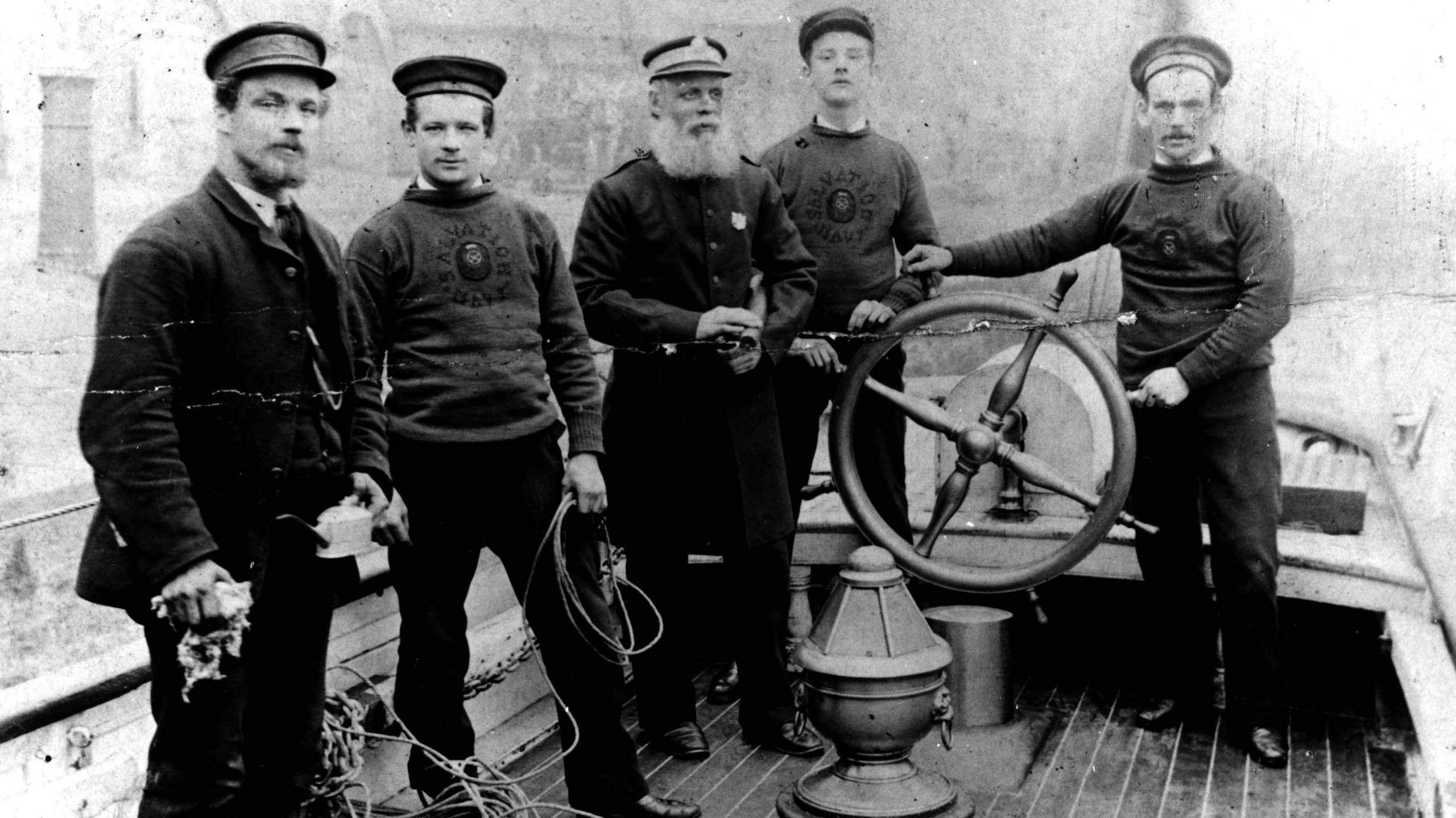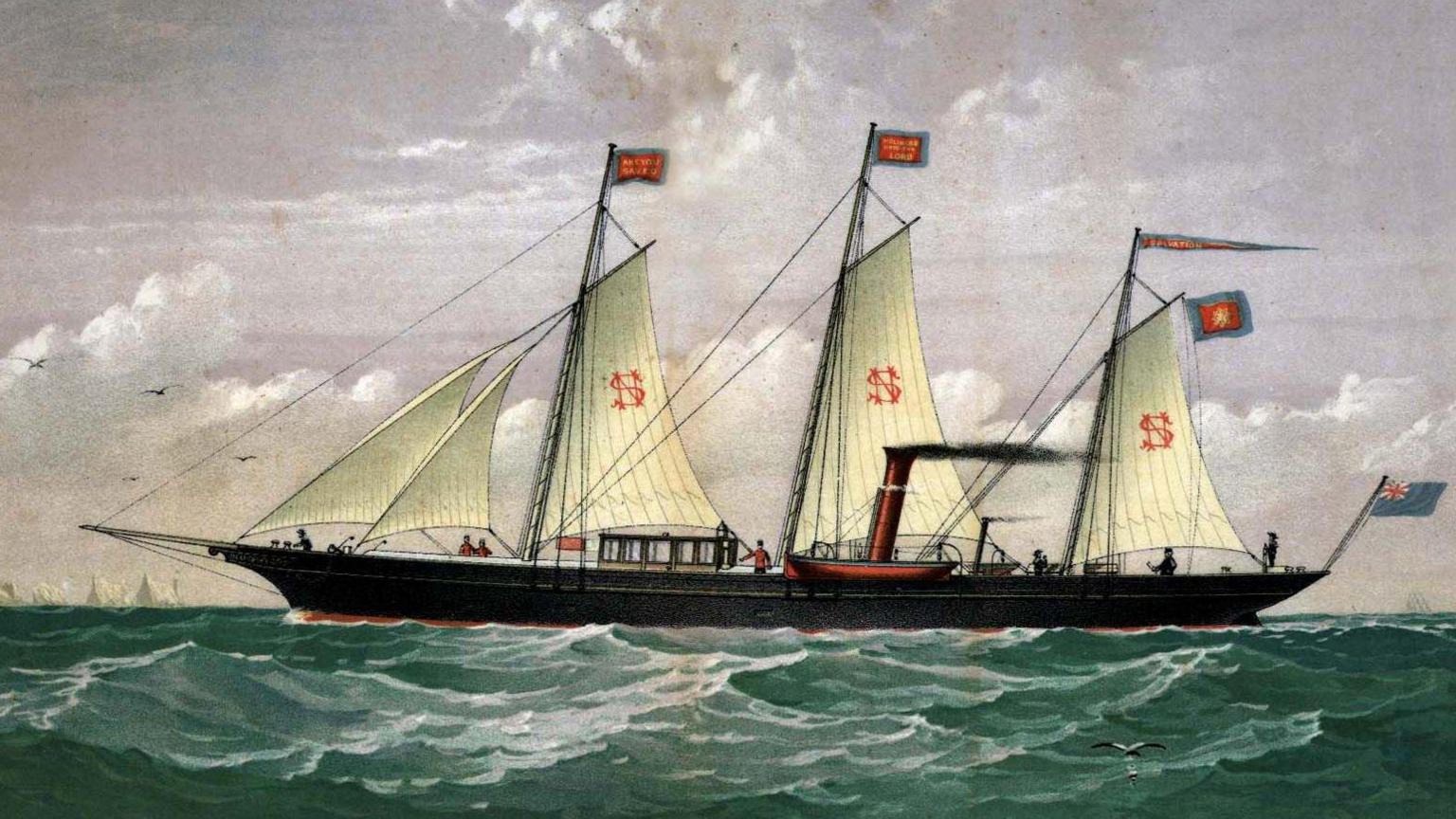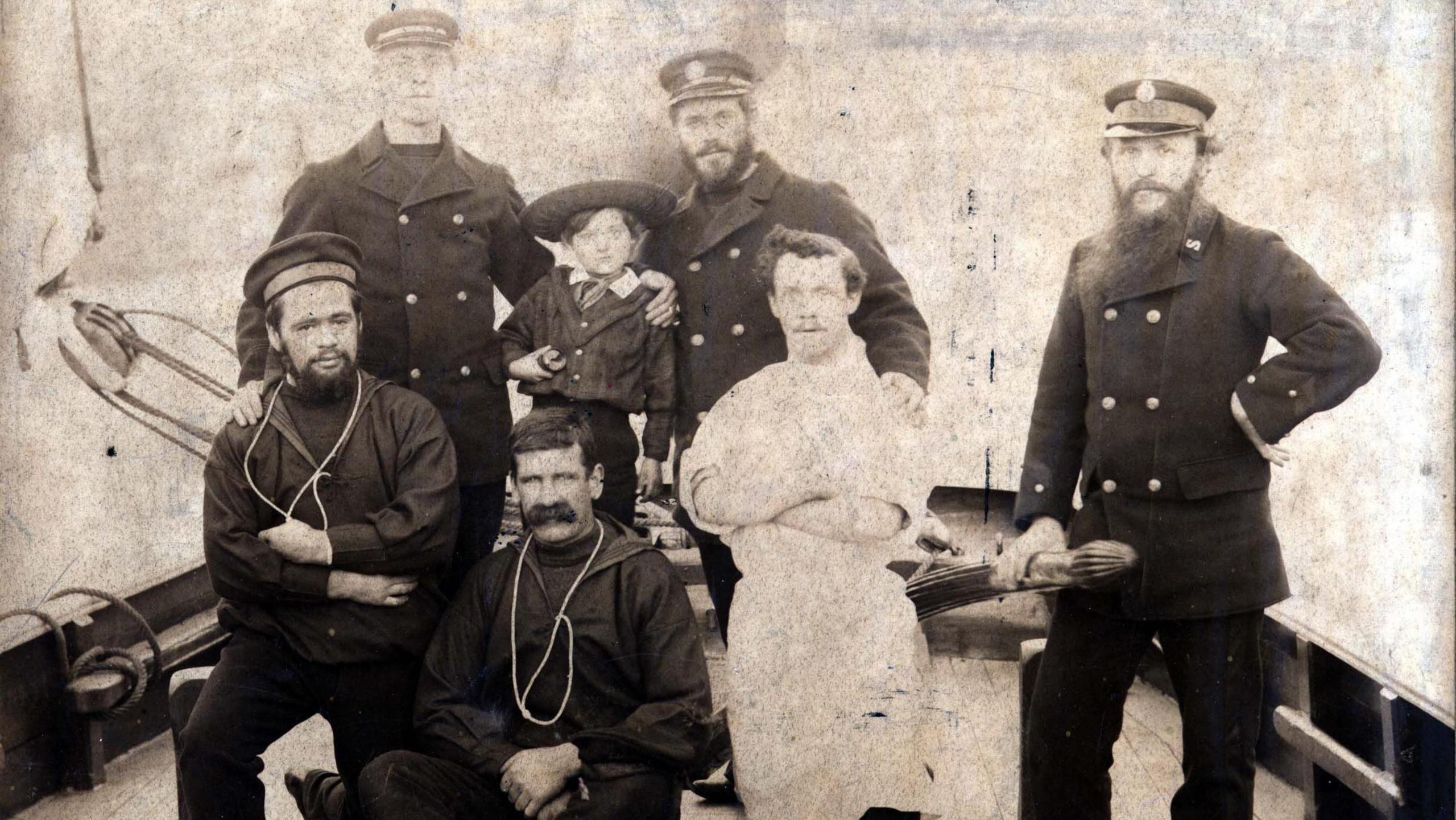How the Salvation Army's navy was sunk - twice

The crew of the short-lived SS Iole
- Published
Most people will know all about the Salvation Army and their tireless charity work.
Maybe you have fond memories of one of its bands playing at a summer fete or performing Christmas carols in your town centre?
But few will probably have heard of the Salvation Navy.
Because, believe it or not, there was briefly such an organisation - and it all started in Wales.
How Wales' ancient rainforests inspired folklore
- Published18 February 2024
How great fire spared lives and stemmed plague
- Published27 December 2023
In 1884, Salvation Army founder William Booth expressed a desire to take his evangelism to the sea.
In what many described as a piece of divine providence, at the same time Welsh industrialist John Cory was looking to offload a steam yacht he’d bought for his wife - a vessel she was too nervous to sail.
Cory offered the SS Iole to Booth and the Salvation Navy was born.
Director of the Salvation Army’s International Heritage Centre Steven Spencer explained that, whilst an extraordinarily generous act of regifting, Cory nevertheless had his own motivations.
“John Cory’s family gave their name to the hugely successful South Wales Brass band, and that in itself is significant," he said.
“We have no reason to doubt his devout faith, but through such acts, this coal-broker and ship-owner tried to cement his reputation and instil in his workers a way of life which kept them sober and productive.”
So, in June 1885, SS Iole left Cardiff's Bute Dock for Shoreham Harbour in Sussex where she underwent a refit in preparation for her August launch as the Salvation Navy flagship.

In June 1885, the SS Iole set out from Cardiff's Bute Dock
Her three new masts flew the Salvation Army colours of red, blue and yellow, alongside flags bearing the words “Are You Saved?” and “Holiness Unto the Lord”.
The use of a pleasure yacht for an evangelical mission did not go unremarked though.
She was described in the Salvation Army newspaper The War Cry as "A little gem, perfect in all her appointments" and "almost too luxurious for salvationists".
“We fancy our comrades have little use for the pier-glass and sofas which adorn the cabins, but the piano fitted to the saloon can hardly come amiss to them,” the paper added.
With a crew of five, under the command of former Hartlepool lifeboat skipper Captain Sherrington Foster, SS Iole spent the next year visiting the south coast of England from Cornwall to Kent, The Isle of Wight and the Channel Isles.
Their mission statement was to: “Hurry up after every poor blue jacket who has not another friend in the world, and rush in with salvation to every fisherman’s boat and every bargeman’s keel.”
But from the very outset, the Salvation Navy was beset with levels of seafaring bad luck worthy of Only Fools & Horses' Uncle Albert.

Director of the Salvation Army’s International Heritage Centre, Steven Spencer, described how disaster struck
“By the summer of 1886, the SS Iole was conducting an evangelical campaign in East Anglican ports, including Lowestoft in May and Ipswich in June," said Steven Spencer.
"Disaster then struck as they were sailing to hold a series of meetings with Salvationists in Hull.
“On the evening of 11 June 1886, the ship struck a sandbank in the Humber, possibly snagging on wreckage of a ship that had run aground a few weeks earlier.
"It began taking on water and the crew had to escape on the lifeboat and row ashore.
“The next morning it was reported that, 'at dead low water, only two or three feet of her funnel were to be seen’.”
Nevertheless, John Cory once again came to the rescue and this time conjured up an even more formidable ship.
It was an 82ft (24.9m) racing yacht which became known as the Salvation Gun-Boat.
She underwent a refit costing £120 at Southampton and was equipped with a meeting room below deck which could hold over one hundred Salvationists.
Although, having seemingly not learnt their lesson, the Sally Navy once again didn’t take as much care over their choice of skipper.
Records show its captain Abbot Taylor as having a somewhat underwhelming CV, in which he was merely described as "a former Torbay fisherman".
But the crew set about an even more concerted campaign to win hearts and minds.
“Over Christmas 1887 The Vestal put in to Bute Dock (Cardiff), where it had all begun," said Mr Spencer.
“They attempted converting men by appealing to their own interests, organising events such as bicycle stunt displays.”
The celebration was a huge success, but less than two months later The Vestal had befallen the same fate as its predecessor - colliding with another craft on the London's Thames river and damaged beyond repair.

Salvation Navy crew members, pictured in Cardiff in 1888
With John Cory’s patience seemingly run out, the idea of the Salvation Navy having its own fleet was later wound up.
However, according to Hilary Carey, professor of Imperial and Religious History at the University of Bristol, the venture did at least spawn many privateer Christian missions amongst other sailors.
“The movement to create national institutions to cater specifically for sailors’ physical and spiritual needs was one outcome," said Prof Carey.
“These organisations together significantly contributed to maritime welfare during the 19th century.
"Their collective legacy endures today in continued efforts to support the wellbeing of seafarers.”